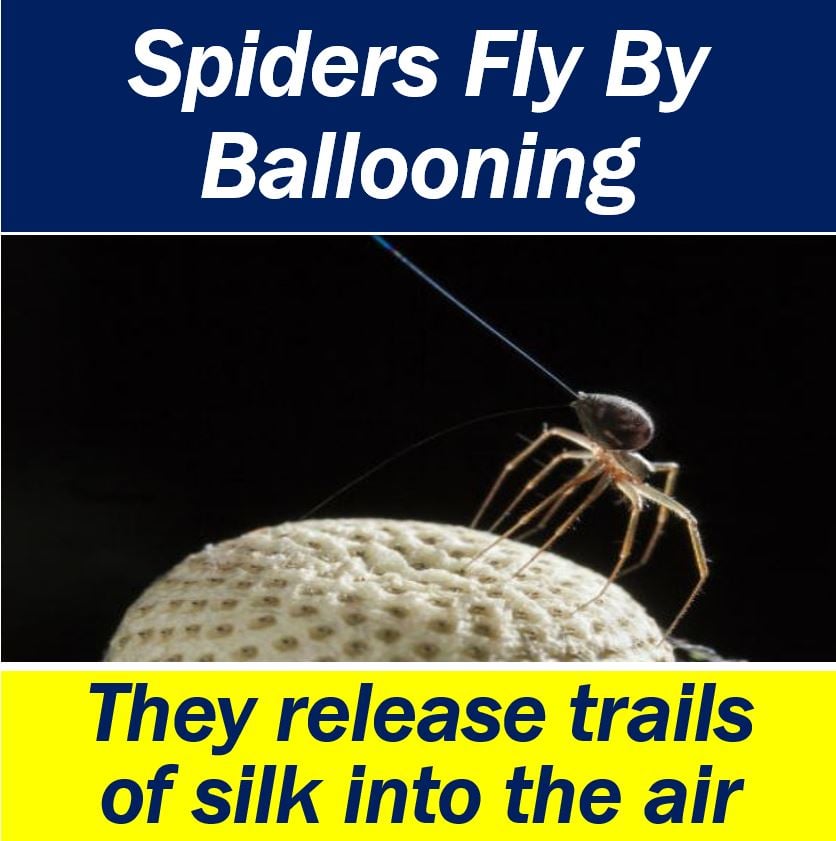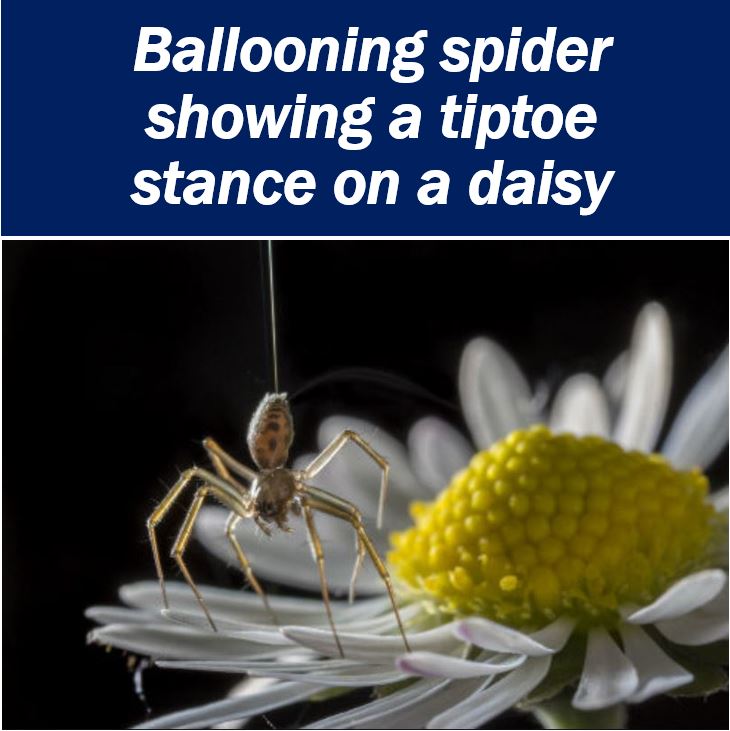Spiders fly, even on windless days, because they take advantage of electric fields. For hundreds of years, scientists have wondered about the aerodynamic capabilities of spiders. ‘How can spiders fly,’ Charles Darwin often asked himself. Darwin saw hundreds of spiders fly on the Beagle on a calm, windless day out at sea.
Spiders fly, scientists have long told us because they use a technique we call ‘ballooning.’ In other words, they release trails of silk that propel them up in the wind.
However, ballooning does not explain how spiders fly when there is no wind. In fact, they can even fly in the rain with no wind about.
Put simply, how can a spider take off with low levels of aerodynamic drag?
Two biologists from the University of Bristol in England believe they have solved the mystery.
A repelling electrostatic force
Dr. Erica Morley, who works at the University of Bristol’s School of Biological Sciences, said:
“Many spiders balloon using multiple strands of silk that splay out in a fan-like shape, which suggests that there must be a repelling electrostatic force involved.”
“Current theories fail to predict patterns in spider ballooning using wind alone as the driver. Why is it that some days there are large numbers that take to the air, while other days no spiders will attempt to balloon at all?”
“We wanted to find out whether there were other external forces as well as aerodynamic drag that could trigger ballooning and what sensory system they might use to detect this stimulus.”
Dr. Erica Morley and Prof. Daniel Robert wrote about their study and findings in the journal Current Biology. Prof. Robert also works at the University’s School of Biological Sciences.

Spiders fly using a global electric circuit
There is a global electric circuit we call APG. APG stands for Atmospheric Potential Gradient. APG is always present in the atmosphere.
Insects can detect APGs and e-fields, i.e., electric fields, that surround all matter. A bumblebee, for example, can detect e-fields that arise between itself and flowers. A honeybee uses e-fields to communicate with its hive.
We have long known that spider silk is an effective insulator of electricity. However, we didn’t know spiders could detect e-fields and also respond to them like bees can.

Spiders fly in the lab
Dr. Morley and Prof. Robert exposed Linyphiid spiders to laboratory-controlled e-fields. They were similar to those that exist in the atmosphere.
The researchers noticed that they could make the spiders fly up or come down. All they had to do was switch the e-field on and off. In other words, when the e-field was on, the spiders flew upward, but when they were off, they came down.
This upward-downward response proves that spiders can fly even when there is no wind. They can fly thanks to the electric fields.
Dr. Morley explained:
“Previously, drag forces from wind or thermals were thought responsible for this mode of dispersal, but we show that electric fields, at strengths found in the atmosphere, can trigger ballooning and provide lift in the absence of any air movement.”
“This means that electric fields as well as drag could provide the forces needed for spider ballooning dispersal in nature.”
Spiders fly and so do caterpillars
The authors believe their findings may apply to other creatures, i.e., not just arthropods. Aerial dispersal is also a vital biological process for spider-mites and many caterpillars.
A better understanding of the mechanisms behind dispersal is important for ecology, i.e., global ecology.
The authors added that they need to study this phenomenon further.
Dr. Morley said:
“The next step will involve looking to see whether other animals also detect and use electric fields in ballooning. We also hope to carry out further investigations into the physical properties of ballooning silk and carry out ballooning studies in the field.”
Video – Spiders fly using electricity
This University of Bristol video explains how spiders use electric fields to fly in the air.
